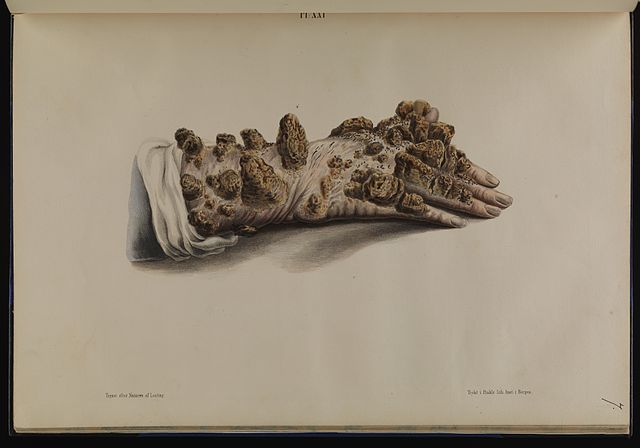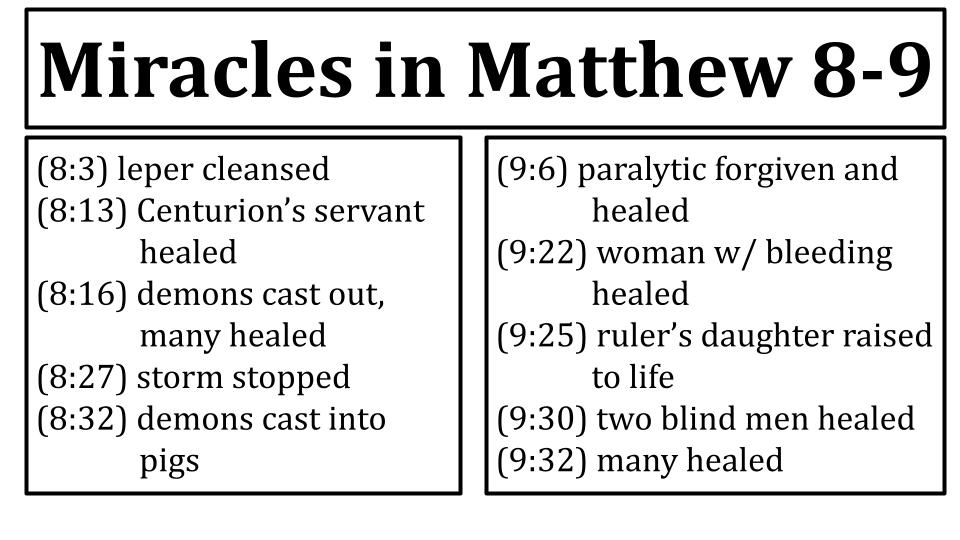
When he came down from the mountain, great crowds followed him. And behold, a leper came to him and knelt before him, saying, “Lord, if you will, you can make me clean.” And Jesus stretched out his hand and touched him, saying, “I will; be clean.” And immediately his leprosy was cleansed.
Matthew 8:1-3
Sorry about the gross image. But that is what tubercular leprosy actually looks like, from Wikipedia, from an old medical handbook. If it is disgusting to our modern eyes, imagine how people with this condition were treated in ancient times!
Let’s try to appreciate the word “clean.” Notice the leper doesn’t say “you can make me well,” though that is certainly part of what he was asking for. “Clean” to us means “not dirty,” implying you have bathed recently. But clean to the Jews back then was a public status that conveyed, “acceptable,” or “worthy of civilized society.” To be “unclean” meant you were an outcast – deliberately shunned from all social settings.
And this is what the Old Testament required.
“The leprous person who has the disease shall wear torn clothes and let the hair of his head hang loose, and he shall cover his upper lip and cry out, ‘Unclean, unclean.’ He shall remain unclean as long as he has the disease. He is unclean. He shall live alone. His dwelling shall be outside the camp.
Leviticus 13:45-46
Imagine the experience of someone who had lived this way for years. Isolated. Homeless. Scrounging for scraps. No one to associate with except other lepers and outcasts. (This is why they formed colonies.) No holidays. No annual feasts. No access to the local synagogue much less the temple in Jerusalem.
And if anyone approached you by accident you had to cry aloud, “Unclean!” to alert them that you were there.
What faith it took for this leper to see Jesus and ask him not only for healing but for cleansing. He was looking to not just be made healthy again but to be restored in the fuller sense to community among the people of God. And, of course, that was Jesus’ actual agenda. Yes, he healed a lot of people physically. But his main goal was to cleanse them spiritually and restore them in every area of life.
This truth is explicit one chapter later when Jesus heals the paralytic physically but only after first pronouncing his sins forgiven (Matt. 9:1-8). That forgiveness-healing miracle is in the middle of two chapters recounting miracle after miracle.

This dramatic and encouraging section of Scripture that begins with the leper’s faith ends with this inspiring conclusion:
“And Jesus went throughout all the cities and villages, teaching in their synagogues and proclaiming the gospel of the kingdom and healing every disease and every affliction. When he saw the crowds, he had compassion for them, because they were harassed and helpless, like sheep without a shepherd. Then he said to his disciples, ‘The harvest is plentiful, but the laborers are few; therefore pray earnestly to the Lord of the harvest to send out laborers into his harvest.’”
Matthew 9:35-38
As much as these stories are meant to inspire us with the authority and compassion of Jesus, they should also feel like a commissioning to prayerfully go into the harvest field to continue the restorative work of our Lord. Pray for workers – and expect to be one of those workers who gets sent out by Jesus!
